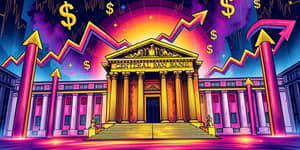
As the global economy evolves, consumer wallets remain at the heart of change. From cautious optimism amid inflation worries to a surge in eco-conscious purchases, individuals are reshaping markets with every transaction. This article delves into the data driving these shifts, explores generational differences, and offers practical strategies for businesses and consumers to thrive in this new landscape.
In 2025, overall spending is forecast to rise by 2.3% year-over-year, signaling continued growth despite lingering concerns. With 76% of consumers worried about rising costs, particularly among Gen X and Boomers, the delicate balance between optimism and caution has never been more apparent.
Strong job growth and stable inflation have fostered an environment where consumers are expressing cautious optimism. Low unemployment gives households confidence to plan for big-ticket purchases, yet rising grocery and energy bills temper spending plans.
The global context cannot be ignored: geopolitical tensions, supply chain disruptions, and uneven recovery rates across regions all feed into consumer sentiment. While many feel secure in their income, the fear of unexpected costs leads to more deliberate budgeting and fewer impulse buys.
The gap between younger and older consumers has widened. Gen Z and Millennials outpaced the average with nearly 5.9% higher spending growth in May, driven by lifestyle upgrades, entertainment, and digital services. Their willingness to explore new brands and adjust budgets reflects an appetite for innovation and experiences.
Conversely, Gen X and Boomers exhibit caution, prioritizing essentials and long-term financial security. Sixty percent report adjusting household budgets to accommodate rising living expenses, demonstrating a more conservative approach to discretionary spending.
Sustainability has shifted from a niche preference to a mainstream requirement. Over half of consumers now indicate they’d pay a premium for products labeled as eco-friendly. This trend is strongest among younger cohorts, with Millennials and Gen Z leading the charge.
Transparency in sourcing, reduced packaging, and carbon-neutral commitments are no longer optional—they’re pivotal in building trust. Brands that champion ethical practices unlock deep brand loyalty and command higher price points.
While online shopping frequency has dipped slightly, digital channels remain crucial. Price comparisons, user reviews, and fast shipping continue to guide purchase decisions. Social media platforms and AI-powered recommendation engines are blurring the lines between browsing and buying.
Seamless integration of technology and convenience has become a differentiator. Voice commerce, augmented reality try-ons, and chatbot support streamline the customer journey, increasing satisfaction and repeat engagement.
Artificial intelligence is no longer a futuristic concept; it’s embedded in everyday shopping experiences. From personalized offers to predictive inventory management, AI drives efficiency for retailers and relevance for consumers. Meanwhile, the rise of bargain marketplaces reflects a growing cohort of value-conscious shoppers seeking deals without compromising quality.
Social commerce, merging community and transaction, is unlocking new opportunities. Influencer partnerships and live-stream shopping events are generating momentum and creating real-time engagement that transforms passive followers into active buyers.
In a rapidly changing environment, companies must be agile. Understanding consumer psychology, segmenting audiences by generational traits, and embracing innovation will determine success. Below are practical steps to adapt and thrive:
Looking ahead, consumer spending is poised for steady growth, but the nature of that spending will continue to evolve. Expect ongoing emphasis on environmental impact, digital innovation, and personalized experiences.
Businesses that anticipate these demands, foster trust through authenticity, and remain adaptable will capture the loyalty of the modern consumer. For individuals, staying informed and intentional with spending not only safeguards personal finances but also contributes to positive societal change.
Ultimately, the shift in consumer behavior represents a powerful force shaping the future economy. By recognizing these trends and responding thoughtfully, both consumers and businesses can unlock opportunities for sustainable growth and shared prosperity.
References













